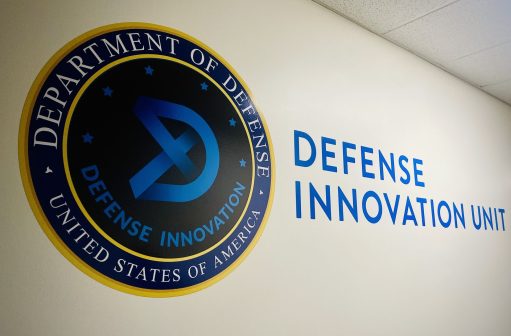Pentagon creating new role to break down ‘language barrier’ between non-traditional vendors, DOD

In an effort to bring more non-traditional government contractors into the defense sector, the Pentagon has kicked off a new effort to identify employees who can serve as a go-between for new companies and the broad defense acquisition community.
Those chosen for the so-called “transition concierge” role will act as “the translator between the non-traditional [companies] and the weapon system developers,” Dave Tremper, director of the Pentagon’s Acquisition, Integration and Interoperability (AI2) Office, said Thursday at Defense One’s future of defense acquisition summit.
Tremper’s office is working with the Office of the Assistant Secretary of Defense for Industrial Base Policy to identify candidates who currently serve program executive officers that would be able to create a communications pathway between non-traditional vendors and the department. The selectees are expected to begin work “in the next few months,” he said.
The Defense Department has recently been working to transfer more technologies from the commercial sector into warfighter capabilities — having created a number of dedicated organizations and funding programs to do so. However, Tremper said a lot of significant conversations about capabilities and technology can get lost in translation.
“There is a significant language barrier between the non-traditional commercial community and the Aegis weapon system developer,” he explained. “There’s a ton of acronyms [that] if you work in the military, you understand. There’s tons of acronyms that are used in their day-in-the-life.”
At the same time, the Pentagon’s acquisition professionals and operational users in the military can sometimes have a difficult time understanding what exactly a piece of innovative technology is and how it can be applied for warfighters, Tremper noted.
“The concept of a transition concierge is actually the doorway into that community, who can act as that translator between the weapon system developer and the non-traditional technology developer so that you can marry the two up together,” he said.
Tremper was tapped as the first director of the Pentagon’s AI2 Office, created in 2022 to synchronize the various acquisition efforts happening across the services in order to promote joint requirements and integrate cross-domain warfighting capabilities. Much effort is focused on Joint All-Domain Command and Control (JADC2), which aims to seamlessly connect battlefield sensors, shooters and networks for enhanced decision-making.
Tremper said his past experience as a science-and-technology program manager combined with his current role in acquisitions has shown him that a lack of requirements is one reason why some technology never moves into production and fielding, a phenomenon known as the “valley of death.”
“There are things that are being pushed, regardless of whether there’s a need or requirements to do that,” he explained. “The problem is if there’s not a requirement for it, it’s not going to be magically transitioned because there is no money to pay for the acquisition of that thing in the absence of a requirement.”
Formal requirements are also key to certifying and approving innovative technologies, in addition to ensuring that operators are properly trained to use them, Tremper added. However, the Pentagon’s Rapid Defense Experimentation Reserve (RDER) is helping speed up that process, he said.
The RDER initiative aims to identify and experiment with prototypes through a series of technology “sprints” in order to rapidly field new systems, close capability gaps and address joint warfighting requirements — particularly for U.S. Indo-Pacific Command.
Tremper said the effort takes prototyping “to the next step” by actually integrating it into real-life systems during the experimentation process, where it can simultaneously be certified and approved.
“Now you’ve gotten to a point where it’s effectively been integrated — potentially even to [initial operational capability] — without ever having acquired it. Now when the requirement shows up, it’s on the shelf [and] you can move it in,” he said.






